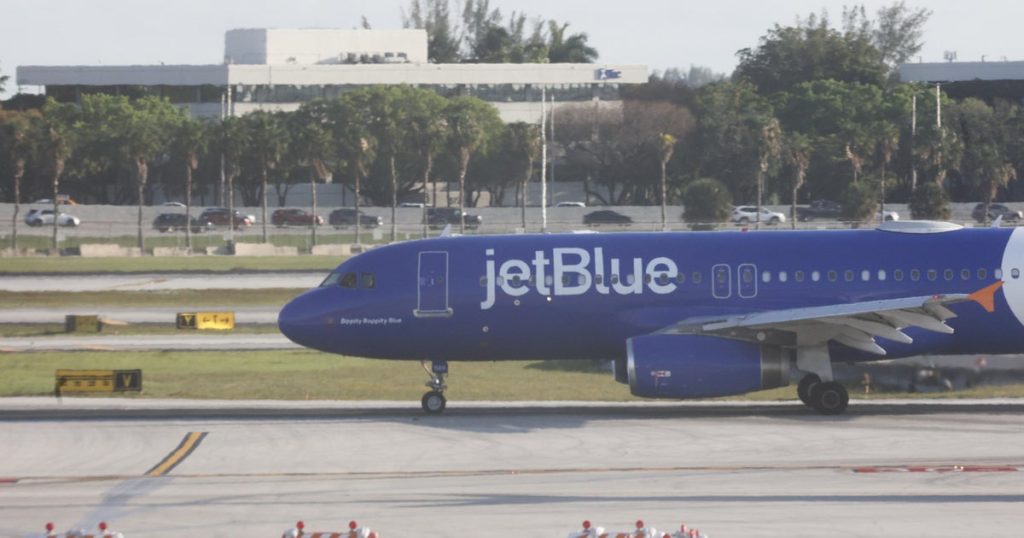In a strategic move to optimize its operational efficiency, JetBlue Airways has announced the suspension of its services at Miami International Airport. The decision comes as part of the airline’s broader effort to eliminate less profitable routes amid shifting travel demands. The final JetBlue flights will depart on September 3, with the company redirecting passengers to nearby airports for their travel needs.
| Article Subheadings |
|---|
| 1) Overview of JetBlue’s Service Changes |
| 2) Flight Operations and Re-routing Options |
| 3) Reasons Behind the Airline’s Decision |
| 4) Implications for JetBlue Customers |
| 5) Future Outlook for JetBlue |
Overview of JetBlue’s Service Changes
JetBlue Airways recently announced the cessation of its operations at Miami International Airport, marking a significant shift in its service strategy. The final flights are scheduled to take off on September 3. This decision has been framed as a crucial part of JetBlue’s ongoing efforts to cut costs while navigating a challenging market environment. Miami International was not a core hub for the airline; it offered only one route to Boston through Logan International Airport, with one to two flights daily.
Flight Operations and Re-routing Options
Passengers looking to travel to South Florida will still find JetBlue at adjacent airports, including Palm Beach International Airport and Fort Lauderdale–Hollywood International Airport. The latter serves as a more substantial operation point for the airline, boasting around 70 flights daily to over 30 destinations as of this past April. JetBlue’s spokesperson, Derek Dombrowski, confirmed these details, emphasizing the importance of providing alternative travel options for affected passengers.
Reasons Behind the Airline’s Decision
The airline’s decision to downsize its operations aligns with a larger industry trend as airlines adapt to changing consumer behaviour and financial pressures. JetBlue’s CEO, Joanna Geraghty, shared insights in an internal memo, stating that the company is determined to “wind down underperforming routes.” This action is driven by a softer demand for air travel, resulting from economic uncertainties that have impacted overall profitability. In her memo, Geraghty noted that although the organization remains hopeful for a future rebound in demand, the recovery process will be prolonged, and continued reliance on borrowed cash remains necessary.
Implications for JetBlue Customers
For customers who have flights booked to or from Miami post-September 3, JetBlue will reach out with options to either reroute their travel through Fort Lauderdale or receive a full refund. This proactive approach aims to ease the transition for passengers who might be inconvenienced by the service discontinuation. JetBlue previously operated up to 14 daily flights to and from Miami at the peak of its service, according to local news sources, making this decision particularly impactful for those who frequently utilized the airline for their travel to and from the region.
Future Outlook for JetBlue
Looking forward, JetBlue’s decision to suspend Miami service reflects broader patterns of operational adjustments faced by airlines navigating post-pandemic travel demands. The company is also temporarily suspending its year-round service between Boston and Seattle, now limiting flights to the summer season only. As JetBlue revamps its operational portfolio, the financial challenges it faces will require strategic planning and agility to remain competitive in the crowded airline market.
| No. | Key Points |
|---|---|
| 1 | JetBlue will cease operations at Miami International Airport effective September 3. |
| 2 | Passengers will be redirected to Fort Lauderdale or given refunds for canceled Miami flights. |
| 3 | The airline’s decision is part of strategic cost-cutting measures amid declining travel demand. |
| 4 | JetBlue operated 14 flights daily at its peak in Miami but has now pivoted to nearby airports. |
| 5 | Future services will focus on more profitable routes as demand patterns continue to unfold. |
Summary
In conclusion, JetBlue’s decision to withdraw from Miami International Airport is emblematic of ongoing adjustments within the aviation sector as airlines grapple with financial viability in the wake of changing market conditions. As JetBlue pivots to enhance profitability, both the immediate and long-term implications will resonate with travelers in South Florida. The airline’s shift towards Fort Lauderdale and Palm Beach for service highlights its commitment to maintaining business operations while better aligning with customer demand.
Frequently Asked Questions
Question: What were the reasons for JetBlue ceasing service to Miami International Airport?
JetBlue decided to cease its service as part of a strategy to cut costs by eliminating underperforming routes amid softening travel demand.
Question: What alternatives are available for passengers affected by this decision?
Affected passengers will be contacted by JetBlue and offered rerouting options through Fort Lauderdale or full refunds for their canceled Miami flights.
Question: How has JetBlue’s overall flight schedule been impacted by this change?
JetBlue will remain operational at Palm Beach International Airport and Fort Lauderdale–Hollywood International Airport, ensuring continued access to South Florida, albeit at alternative locations.


